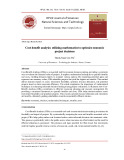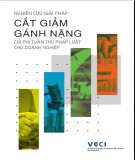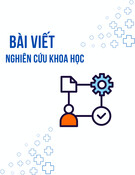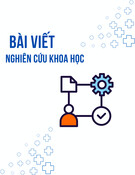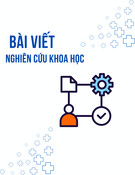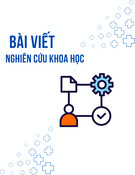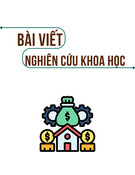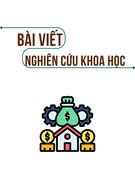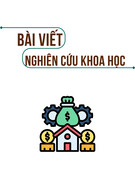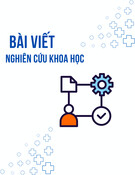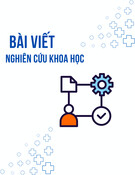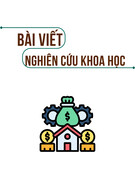
* Corresponding author
E-mail address: teimoury@iust.ac.ir (E. Teimoury)
© 2020 by the authors; licensee Growing Science.
doi: 10.5267/j.uscm.2019.11.001
Uncertain Supply Chain Management 8 (2020) 389–402
Contents lists available at GrowingScience
Uncertain Supply Chain Management
home
p
a
g
e: www.Growin
g
Science.com/usc
m
Optimizing government costs of supporting periodical publications through robust supply chain
network redesign with the consideration of social welfare
Ali Asghar Emadabadia, Ebrahim Teimourya* and Fahimeh Pourmohammadia
aSchool of Engineering, Department of Industrial Engineering, Iran University of Science and Technology, Tehran, Iran
C H R O N I C L E A B S T R A C T
Article history:
Received June 14, 2019
Received in revised format June
28, 2019
Accepted November 2 2019
Available online
November 2 2019
In this paper, two policies are considered for supporting periodical publications by the
government: direct subsidy payment to these publications and opening new facilities which
could help with integration and reduce delivery costs. For this aim, a mixed-integer linear
mathematical model is presented that minimizes total costs while considering social welfare.
The robust programming approach developed by Bertsimas and Sim is used to cope with
uncertain parameters. In order to validate the model and investigate its applicability and
advantages, the magazines’ subscriptions in Tehran is selected as a case study. The output of
the model demonstrates that when social welfare is not considered, the risk-averted supply
chain will focus on low-cost areas of the chain, which are the central areas of Tehran. However,
when minimum social welfare is assured, the supply chain pays attention to all areas. Also, the
government should increase supply capacity by opening new facilities, and it should
differentiate between areas when paying direct subsidies.
.Growin
g
Science, Canada
by
the authors; license 2020©
Keywords:
Social welfare
Periodical publication
Subsidy payment
Supply chain network redesign
Magazines’ subscription
1. Introduction
Social justice has been one of the critical issues in societies for centuries. Social justice means to pay
equal attention to all aspects of social life (economic, political, social, and cultural), and their main
values (wealth, power, and commitment, as well as knowledge) in terms of freedom of actions, equality
of opportunities, and conditional inequality in producing and distributing of main values (Rezaei,
2012). One of the issues that must be addressed in today's societies due to the expansion of urbanization
is social justice concerning urban public space. David Harvey defines social and spatial justice as a fair
allocation of public resources and facilities, in a way to make an awareness among people about their
rights, and their various demographic needs (Harvey, 2009; Zarrinpoor et al., 2018). Social justice is
succeeded through planning and implementation of social welfare programs. Due to the wide range of
activities and programs that take into account social welfare, it has been a controversial issue among
experts in different societies. Given the experience of developed countries, the supply of social services
must first be implemented by the government, and then followed with more targeted interventions
(Un.millennium.project, 2005). Therefore, it can be said that the government is the main provider of
social welfare, and social welfare programs are state-owned affairs (Salimi Far et al., 2015).
Government policies, including cost policies, tax policies, and laws and regulations could affect various

390
economic variables, particularly welfare and poverty (Un.millennium.project, 2005). In this regard,
various studies have focused on the role of the government in enhancing social welfare in recent years.
These studies can be divided into two categories: first, investigating the impact of macro policies such
as fiscal policies (Salimi Far et al., 2015. Rafeei et al., 2018) and Targeted subsidies (Piraee & Seif,
2010) on social welfare; and second, investigating the relationship between the role of the government
in the supply chain and social welfare. These studies are reviewed in Section 2. As newspapers and
other periodical publications can inform and educate at the same time, supporting magazine
publications can help to achieve social and political goals of social welfare. In this paper, two policies
are considered for supporting magazine publications by the government: direct subsidy payment and
opening new facilities which could help with integration and reduce delivery costs. The proposed model
is a mixed-integer linear mathematical model that reduces total costs while guaranteeing a minimum
level of social welfare. Also, a robust programming approach developed by Bertsimas and Sim (2004)
is employed to cope with uncertainties.
The remainder of the paper is organized as follows: The related literature is reviewed in the following
section. In Section 3, the Robust Programming approach developed by Bertsimas and Sim (2004) is
introduced. In Section 4, the problem is defined. Section 5 introduces the case study (magazine
subscriptions of Tehran). In section 6, the proposed model is solved, and the results, as well as the
sensitivity analysis, are presented. Finally, Section 7 is dedicated to conclusions and future research
suggestions.
2. Literature review
The most relevant work to this paper includes the study of Ovchinnikov and Raz (2011) that examined
the pricing problem of electric cars by considering the role of the government in designing incentive
mechanisms based on the newsvendor model. Also, Luo et al. (2014) have studied the supply chain of
electric cars; in their research, the government employs a discount incentive to encourage customers to
buy electric cars and consequently to reduce the air pollution. Xie and Ma (2016) have studied the
supply chain of color television recycling in China. They have introduced a duopoly market in which
the government plays the roles of both a subsidy provider and a wholesaler for the two firms in the
market. To the best of our knowledge, Mahmoudi and Rasti-barzoki (2018) are the first researchers to
model the contradiction between the government goals and the producers' goals using the Game Theory
approach. Their research shows that government policies affect producers’ behavior, competitive
markets, the emission of greenhouse gases, and imposing tariffs is the most effective way to minimize
environmental effects. Heydari et al. (2017) studied the coordination of the reverse and closed loop
supply chain components by considering the government’s role. The supply chain is intended to sustain
consumption by offering a discount or a direct fee in exchange. The primary purpose of the supply
chain network design is to determine the location and capacity of supply chain facilities as well as the
mode of transportation among them. Network design decisions are strategic decisions that have long-
term effects on the supply chain’s performance (Ghavamifar, 2015). Strategic decisions are made for
three to five years in the future, during which many parameters such as demand, capacity, and costs of
the supply chain network could change, significantly. Furthermore, the parameters associated with the
design of the supply chain network include a large amount of data which are often accompanies by
rough estimates due to incorrect predictions, or poor measurements occurred during the modeling
process (Govindan et al., 2017; Wood & Gough, 2006). Researchers such as Mula et al. (2006) and
Klibi et al. (2010) have introduced different categories of data uncertainty. Mula et al. (2006) proposed
that the uncertainty of data can be due to 1) randomness, that comes from the random nature of
parameters or 2) epistemic uncertainty that comes from a lack of knowledge of the parameter values.
Klibi et al. (2010) proposed that data uncertainty can be due to normal business conditions or
disruptions. There are also different approaches to deal with uncertainties. Govindan et al. (2017)
introduced three categories for these approaches: random planning, fuzzy planning, and robust planning
(optimization). Zarinpour et al. (2018) presented a location-allocation hierarchy model to design a

A. A. Emadabadi et al. /Uncertain Supply Chain Management 8 (2020)
391
health service network. Cui et al. (2016) studied the design of a two-level supply chain in which a set
of suppliers serve a set of terminals with uncertain demand. In particular, they considered the possibility
of a transportation disruption that might stop a reliable supplier. Yahyaei and Bozorgi-Amiri (2018)
investigated the design of a disaster relief logistics network under uncertainty and disruptions. In the
paper above, an integer linear programming model is proposed. Kamalahmadi and MellatParast (2017)
studied the effectiveness of incorporating three types of redundancy practices (pre-positioning
inventory, backup suppliers, and protected suppliers) in a supply chain that faces both supply and
environmental risks. They demonstrated that regionalizing a supply chain is an effective way to reduce
the negative impacts of environmental disruptions. The design of hub transportation networks is a
strategic issue that has been explored by Rostami et al. (2018). Their model was designed for large-
scale problems based on the branch and bound framework of the Benders Decomposition technique.
Hasani et al. (2012) presented a general comprehensive model for the strategic design of a closed-loop
supply chain network under data uncertainty. The proposed model is multi-period, multi-product, and
multi-level. Also, it considers the uncertainties associated with demand quantities and purchase costs.
The integration of location and inventory problems in the supply chain is one of the standard topics in
this field that Dai et al. (2018) have addressed. They developed an optimization model with fuzzy
capacity and carbon emissions constraints for perishable products.
Reviewing the literature regarding supply chain management and social welfare reveals that the
existing studies have investigated the role of legislation or financial subsidies in social welfare.
However, to the best of our knowledge, no study considers the role of the government in designing the
supply chain network and strategic decisions. In this study, the government's goal is to minimize its
costs while providing social welfare through granting subsidies and direct interference in the supply
chain by establishing new facilities under uncertainty. Among the existing approaches for dealing with
uncertainty, a robust optimization method is employed in this study, and among the methods of
robustness, the method developed by Bertsimas and Sim (2004) is used for two reasons: First, it
provides a more realistic approach that can be adjusted to various levels of risk taking. Second, it retains
the linearity state of the model.
3. Bertsimas & Sim robust optimization approach (2004)
Consider the following linear optimization problem:
(1)
,
1: pmaxzcx
subject to
(3)
A
Xb
(4)
lxu
Constraint (3) includes |I| constraints. Constraint number i∈I is showed as ,
ii
ax b. The set of
coefficients 𝑎
,𝑗∈𝐽
, which is subject to uncertainty, is named 𝐽. The term 𝑎
,𝑗∈𝐽
is based on a
symmetric distribution with the mean of 𝑎. The 𝑎
takes values in 𝑎 −𝑎
,𝑎+𝑎
. For every
constraint i∈I, we introduce a parameter Γ, which is not necessarily an integer, and can take values in
the intervals0, |𝐽|. The linear model p(1) can be rewritten in p(2) using the approach provided by
Bertsimas & Sim.
(5)
,
2:
p
max z c x
(6) subject to
(7)
i Γ
i
ij j i i ij i
jjJ
ax z p b

392
(8)
,
i
ij J
ˆ
iijijj
zpay
(9)
j
jjj
yxy
(10)
j
jjj
lxu
(11)
,
i
ij J
0
ij
p
(12)
j
0
j
y
(13)
i
0
i
z
The role of the parameter Γ
is to adjust the robustness of the proposed method against the level of
conservatism of the solution. Speaking intuitively, it is unlikely that all of the 𝑎
,𝑗∈𝐽
will change.
Our goal is to be protected against all cases that up to ⌊Γ
⌋ of these coefficients are allowed to change,
and one coefficient 𝑎
changes by (Γ
−⌊Γ
⌋ 𝑎
.
4. Problem definition
The supply chain studied in this paper has four levels: Suppliers, each produces a unique product and
receives the order’s information; Integrators who receive the orders’ information from the registration
system and package the orders; Distributors who receive the prepared packages from integrators and
deliver them to customers; and Customers who are the final receivers.
Supplier
Supplier
Supplier
Customer
order
Distributor
Distributor
Distributor
Integrator
Integrator
Material flow
Information flow
Fig. 1. The structure of the supply chain considered in this study
The flow of information and goods in the supply chain is as follows: the orders are registered by the
customer; the orders’ information is sent to the suppliers based on the goods being requested; the
suppliers send the customers’ orders to the integrators; the integrators wrap the packages and send them
to the distributors. The distributors, then, deliver the packages to the customers. Note that each customer
is allocated to one integrator. The government wants to intervene in this supply chain for assuring social
welfare goals. The social welfare of each region is measured by the demand that is met in that region.
The government has two means for providing social welfare: first, by granting subsidies to suppliers
(magazine publishers), which has an indirect effect on the supply chain; and second, by establishing
new facilities for integrating and distributing customers’ orders, which reduces total supply chain’s
costs and helps all members of the chain. This research aims to minimize the government’s costs
through a well-designed supply chain network. Also, we investigate the impacts of supply chain
network redesign on social welfare. For this aim, a mathematical model is presented in which both
types of interference by the government are considered (subsidy payment and facility establishment).
The supply chain’s profit is guaranteed through adding a constraint which considers a minimum level
Customers
Government
facility

A. A. Emadabadi et al. /Uncertain Supply Chain Management 8 (2020)
393
that must be met. Moreover, the level of social welfare is calculated based on the percentage of demand
quality that is met in each region. The mathematical model is presented after introducing the notations.
4.1. Sets and Indexes
Suppliers' index:
s1,2,,S
Index related to the Integrator:
o1,2,,O
Index related to the Distributors:
d1,2,,D
Index related to the Customer:
c1,2,,C
Index related to the Period:
t1,2,,T
Index related to the Candidate integrator:
ko 1, , Ko
Index related to the Candidate distributor:
kd 1, , d
K
4.2. Parameters
Transportation Cost from Distributor s to Integrator o:
s
o
cshs
Transportation Cost from Supplier s to Candidate Integrator ko:
s
ko
cshsk
Transportation Cost from Integrator o to Distributor d: od
csho
Transportation Cost from Integrator o to Candidate Distributor kd: okd
cshok
Transportation Cost from Candidate Integrator ko to Distributor d: kod
cshkd
Transportation Cost from Candidate Integrator ko to Candidate Distributor kd: kokd
cshkk
Transportation Cost from Distributor d to Customer c: dc
cshd
Transportation Cost from Candidate Distributor kd to Customer c: kdc
cshkc
Production Cost of Product s (per unit):
s
csp
Cost of the vacant capacity of distributor d: d
cshbnd
Cost of the vacant capacity of candidate distributor kd: kd
cshbnkd
Cost of the vacant capacity of integrator o: o
cshbo
Cost of the vacant capacity of candidate integrator ko: ko
cshbko
Deficiency penalty coefficient (based on kg deficiency): bb
Amount of budget required to establish a candidate integrator ko: ko
f
o
Amount of budget required to establish a candidate distributor kd: kd
f
d
Big number: m
The capacity of Integrator o: o
capo
The capacity of Candidate Integrator ko: ko
capko
The capacity of Distributor d: d
capd
The capacity of Candidate Distributor kd: kd
capkd
The demand of Customer c, in Period t for Product s:
s
tc
de
Minimum Profit of Supply Chain at Period t: t
had
Subsidy Coefficient Allocated to Supplier s:
s
zy
Selling Price of Product s (per unit):
s
p

